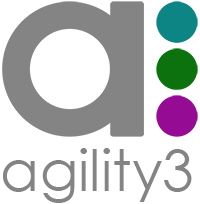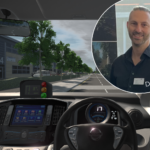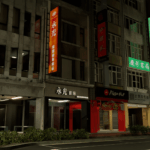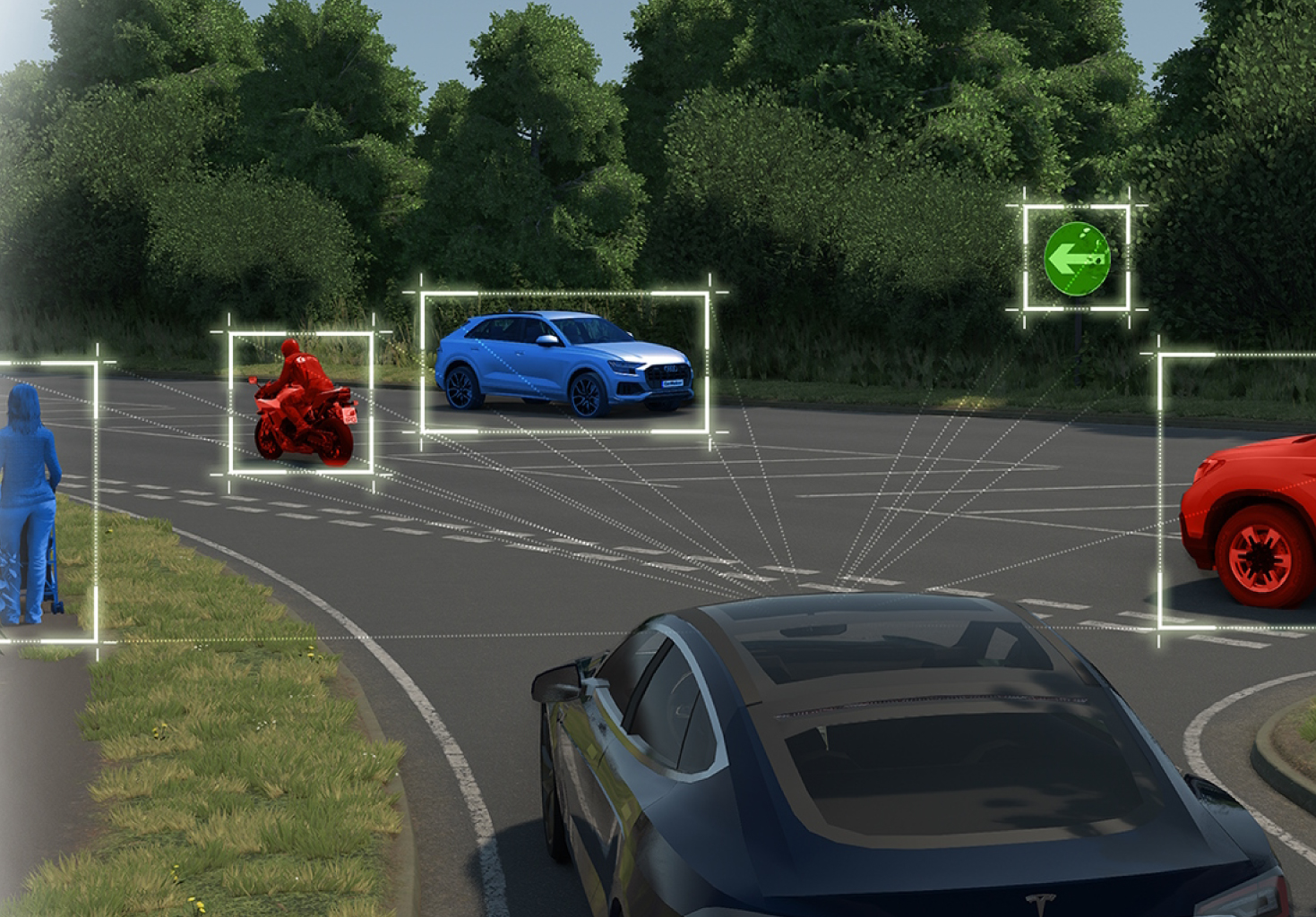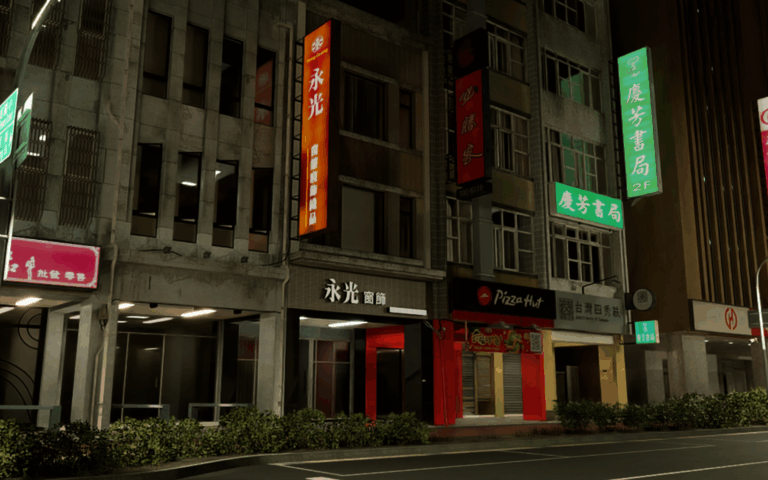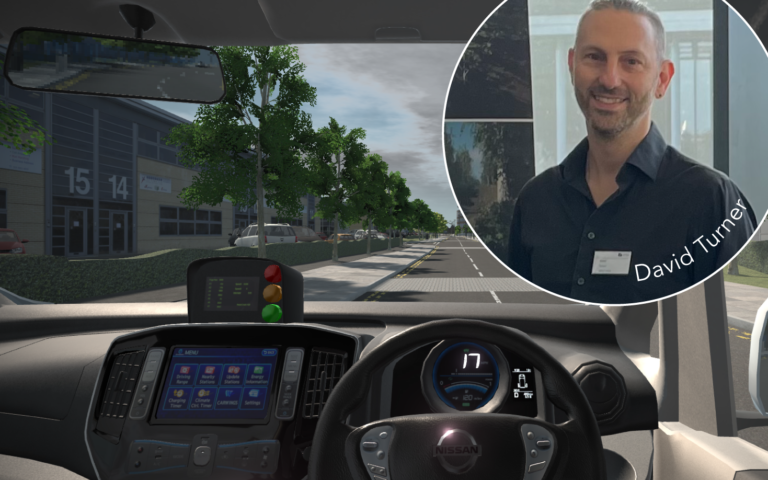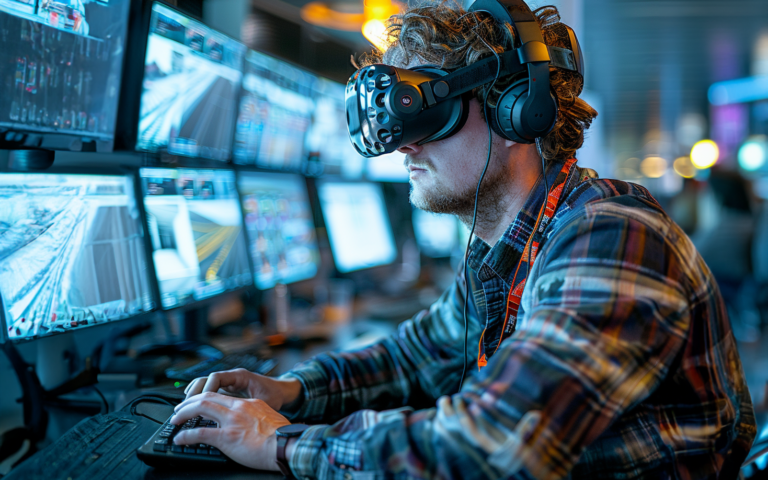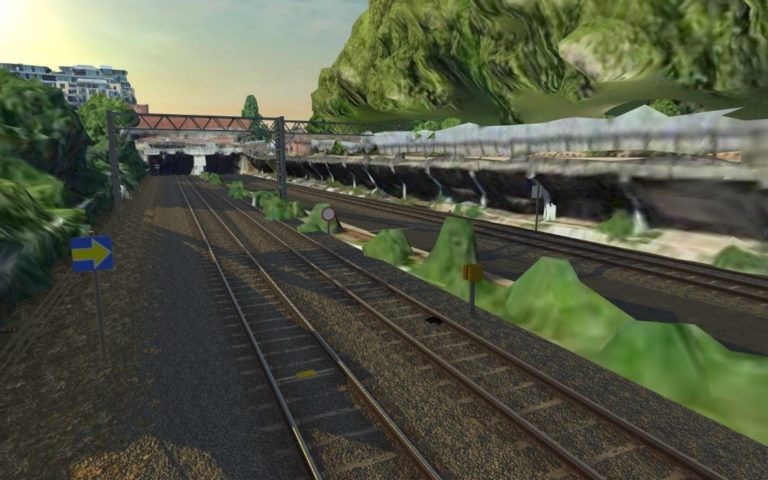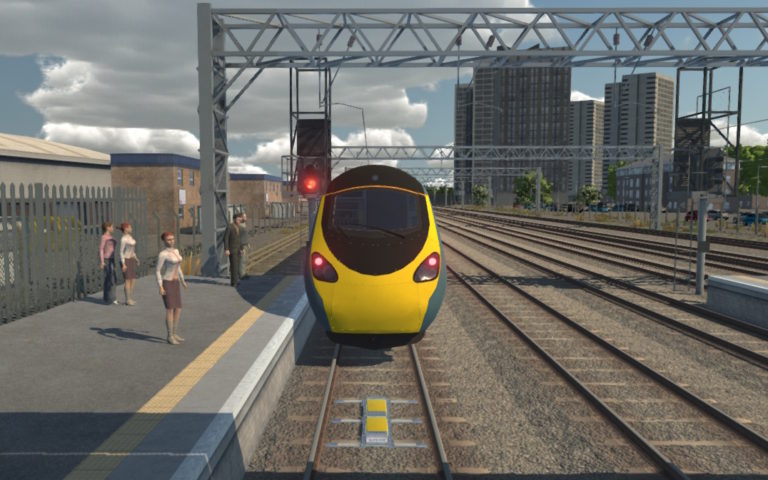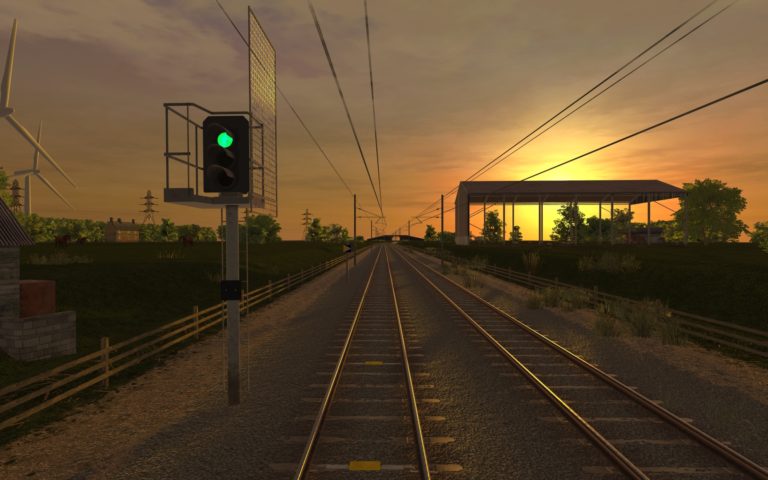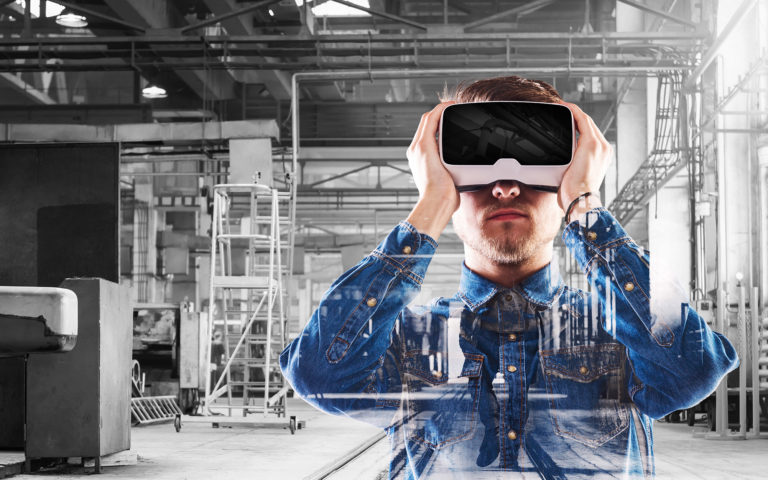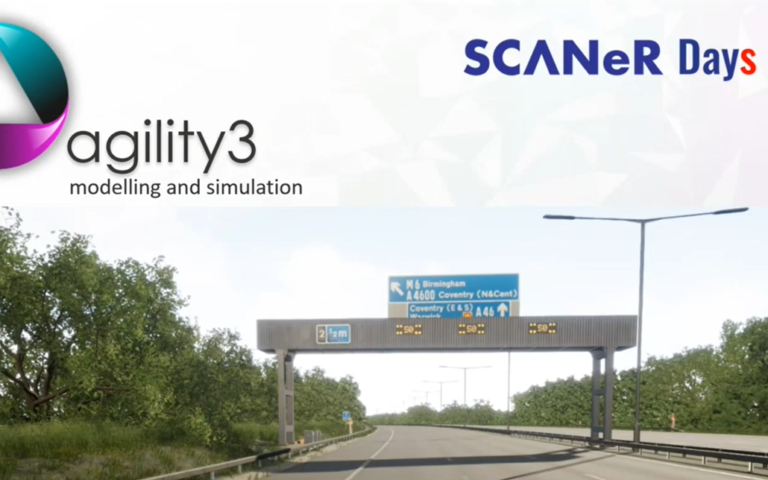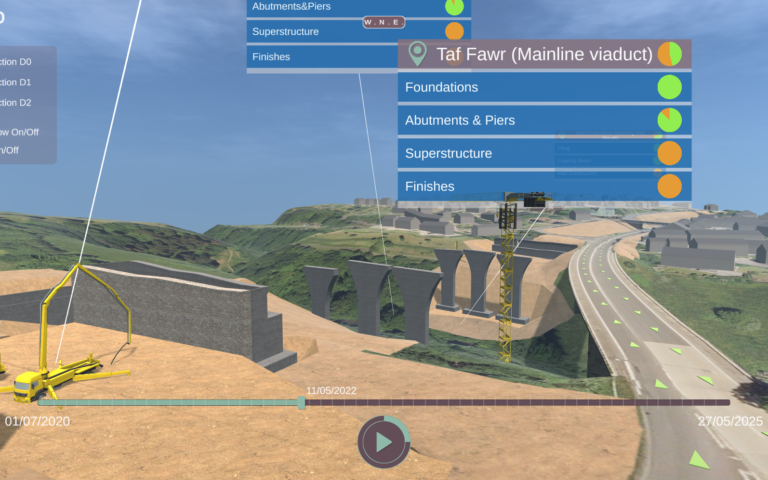At Agility3, our work on 3D visual environments for driving simulation recently saw us attend two key industry events – DSC 2024 and IPG Open House – and one thing that came out of these was a clear indication of the growing need for one specific feature: procedural scene generation.
But what is procedural scene generation, what are the benefits, and what are we at Agility3 doing towards meeting this industry-wide need?
Procedural scene generation: 3D scenes on demand
Procedural scene generation is about enabling simulation users to automatically create the 3D scenes required to meet their simulation objectives, based on data describing the required scene, rather than manually building them using more traditional modelling techniques, thus saving on time, effort, and cost.
This is particularly relevant for industries such as self-driving vehicle testing, where the ability to easily and rapidly simulate a vast number of varied scenarios is becoming crucial. A recurring theme at both the events we attended was the desire for on-demand 3D environment generation, moving away from the labour-intensive and time-consuming process of manually crafting each 3D model.
Take the example of testing self-driving vehicles. Organisations developing these vastly complex and safety critical systems need to run thousands, if not millions, of test scenarios, many of which require specific 3D visual environments – from complex city streets to rural roads with hidden dangers like blind corners.
In many cases, the scenario in which the vehicle is being tested needs a road layout, street furniture, buildings, foliage and driving conditions specific to this test. A generic environment doesn’t provide the specific conditions needed to meet the requirements of a scenario. So, if you are responsible for testing and demonstrating your system is safe in a vast range of scenarios, what do you do?
One option is to use a generic environment and manually customise it for each scenario using simulation tools, such as the terrain tools in SCANeR Studio or the Scenario Editor in CarMaker to add the necessary 3D objects from a generic library. This might get you close, but will take considerable time and will never be perfect.
Another option is to ask a 3D modelling team to create the visual scene necessary. This could achieve exactly what you need but will take even longer – not practical when the number of test scenarios is very large.
If you have an OpenDrive map as part of your scenario data there are a few tools, including those mentioned above, that will allow you to import an OpenDrive map and generate basic road geometry. This may get your road layout close, but then it becomes a more manual task to set up the scenery required by the scenario.
The demand for simulation 3D environments to be generated quickly and cost-effectively, by those conducting the tests, is becoming ever more pressing, as companies realise they simply cannot afford to have teams of 3D artists creating every test scenario from scratch or have engineers manually configuring the scene using the currently available tools.
This is where procedural generation offers a valuable alternative.
Rail: our procedural generation success story
At Agility3, we’ve already addressed this challenge in the rail industry with our innovative tool, RapidRail.
RapidRail enables the procedural generation of 3D railway environments, automating the creation of detailed rail networks and landscapes far more quickly than manual processes would allow.
This is vital for organisations that need to simulate a wide range of rail conditions, stations, and routes, comparing options, ensuring they can conduct crucial research and train efficiently and effectively.
Building on the success of RapidRail, we’re now turning our attention to the automotive sector. The demand for procedurally generated environments in vehicle testing is growing rapidly, particularly with the development of self-driving cars. Whether it’s navigating busy city intersections, coping with worn out road markings, or responding to unexpected obstacles, the sheer volume of testing scenarios means it’s simply not feasible to rely solely on handcrafted environments.
And at Agility3, we’re uniquely positioned to help the automotive industry overcome this hurdle. Here’s why.
The killer combination driving innovation
The key here is that at Agility3, we understand that the future of simulation lies in finding the right balance between quality and efficiency – and this is a strategy we have committed to and invested heavily in.
We draw on the very latest advancements in gaming and simulation, for example, and have built a reputation for efficiently and cost-effectively delivering dynamic, complex simulation scenes.
But we also build stunning realism into our 3D visualisation environments as standard. We’ve specialised in using the latest technologies – such as Physical Based Materials (PBR) – to enable vast, detailed scenes to be accurately rendered in real-time.
And behind the technology sits a team of specialists who are themselves experts in procedural generation techniques and creating exceptional 3D content – and so know exactly how to push the limits of what’s possible.
All this adds up to 3D environments that are both functional and beautiful and with the potential for them to by generated on the fly by the people that need them. Whether it’s for rail, automotive, or other industries, our 3D environments meet specific operational requirements while maintaining the highest quality.
Committed to the future of simulation
Our work on combining efficiency and quality in our 3D environments means we’re already helping many organisations keep pace with the growing demands of modern simulation.
But this is also a commitment that extends far into the future. Whether it’s rail, automotive, or other sectors, we remain dedicated to driving innovation and delivering the highest quality visualisations for our clients’ simulation needs as they change and evolve.
And as we continue to develop procedural solutions tailored to the specific challenges of industries like automotive, we look forward to collaborating with forward-thinking organisations that are eager to push the boundaries of what simulation can achieve.
The future of simulation is bright – and at Agility3, we’re proud to be shining the light that leads the way forward.
Are you interested in procedurally generated scenes for driving simulation? Then get in touch with us today at info@agility3.co.uk or call +44 (0) 1438 488066
